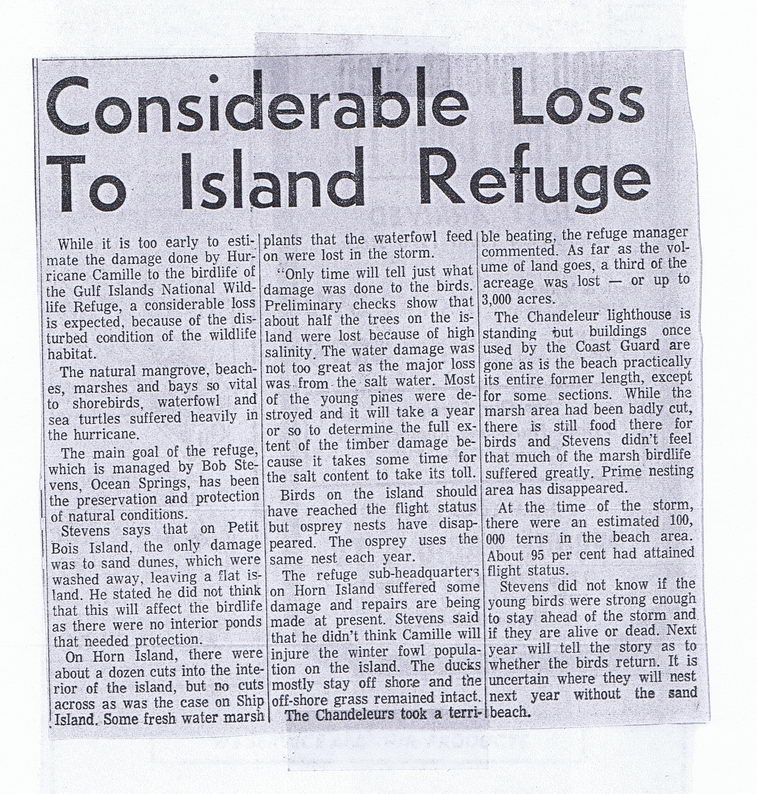This text was obtained via automated optical character recognition.
It has not been edited and may therefore contain several errors.
Considerable Loss To Island Refuge While it is too early to estimate the damage done by Hurricane Camille to the birdlife of the Gulf Islands National Wildlife Refuge, a considerable loss is expected, because of the disturbed condition of the wildlife habitat. The natural mangrove, beaches, marshes and bays so vital to shorebirds, waterfowl and sea turtles suffered heavily in the hurricane. The main goal of the refuge, which is managed by Bob Stevens, Ocean Springs, has been the preservation and protection of natural conditions. Stevens says that on Petit Bois Island, the only damage was to sand dunes, which were washed away, leaving a flat island. He stated he did not think that this will affect the birdlife as there were no interior ponds that needed protection. On Horn Island, there were about a dozen cuts into the interior of the island, but no cuts across as was the case on Ship Island. Some fresh water marsh plants that the waterfowl feed on were lost in the storm. “Only time will tell just what damage was done to the birds. Preliminary checks show that about half the trees on the island were lost because of high salinity. The water damage was not too great as the major loss was-from the salt water. Most of the young pines were destroyed and it will take a year or so to determine the full extent of the timber damage because it takes some time for the salt content to take its toll. Birds on the island should have reached the flight status but osprey nests have disappeared. The osprey uses the same nest each year. The refuge sub-headquarters on Horn Island suffered some damage and repairs are being made at present. Stevens said that he didn’t think Camille will injure the winter fowl population on the island. The ducks mostly stay off shone and the off-shore grass remained intact. The Chandeleurs took a terri- ble beating, the refuge manager commented. As far as the volume of land goes, a third of the acreage was lost — or up to 3,000 acres. The Chandeleur lighthouse is standing nut buildings once used by the Coast Guard are gone as is the beach practically its entire former length, except for some sections. While the marsh area had been badly cut, there is still food there for birds and Stevens didn’t feel that much of the marsh birdlife suffered greatly. Prime nesting area has disappeared. At the time of the storm, there were an estimated 100, 000 terns in the beach area. About 95 per cent had attained flight status. Stevens did not know if the young birds were strong enough to stay ahead of the storm and if they are alive or dead. Next year will tell the story as to whether the birds return. It is uncertain where they will nest next year without the sand beach.

Hurricane Camille Camille-Aftermath-Media (045)